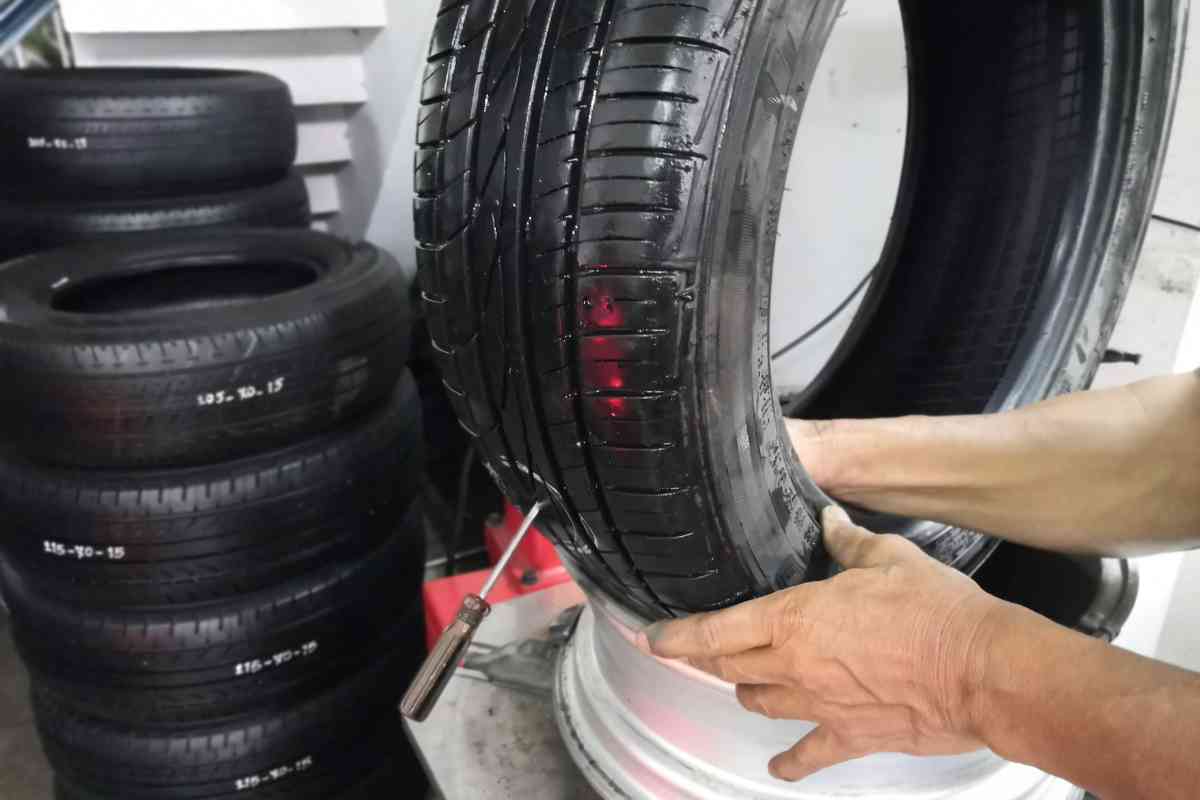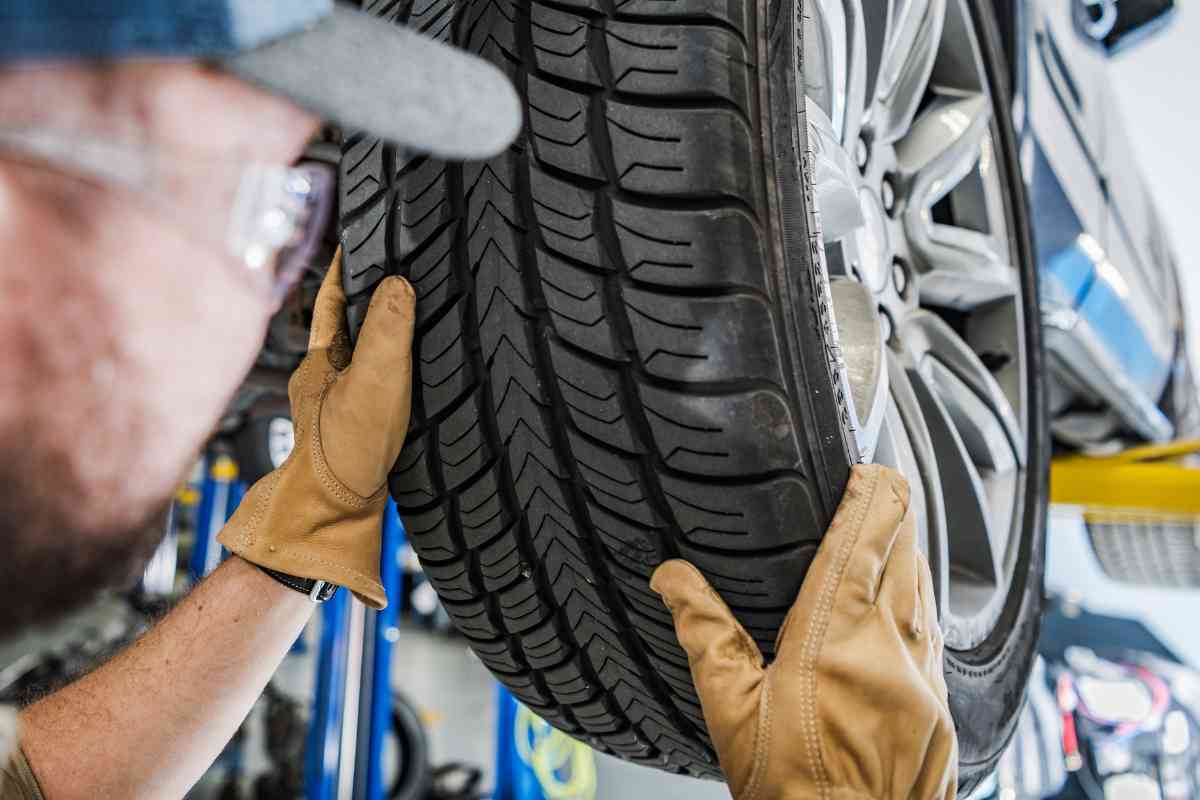How Long Do Patches Last on Tires: Lifespan and Durability Explained
Have you ever encountered a tire puncture and wondered what to do next? Tire patches are a go-to solution for such unexpected moments. Imagine you’re driving, and a sharp object like a nail or screw turns your smooth journey into a bumpy challenge. In such situations, understanding the role and reliability of tire patches is crucial.

Related Post! The Cost Of Repairing A Flat Tire
How Long Does A Tire Patch Last?
The lifespan of a professionally applied tire patch varies, typically ranging from 7,000 to over 30,000 miles. Its durability hinges on the patch’s quality, the tire’s condition, and driving habits. High-quality patches, especially on well-maintained tires, can last almost as long as the tire itself. Regular inspections are crucial.
Tire patches are commonly used for repairing punctured or damaged tires. They work by being adhered to the inside of the tire, effectively sealing the hole. This handy method allows you to continue using your tire without the immediate need for a new tire. However, the lifespan of these patches varies, depending on:
- Quality of the Patch: The durability of a tire patch significantly depends on the quality of materials used.
- Condition of the Tire: A tire in good condition, with adequate tread depth and without excessive wear, holds a patch better.
- Application Method: It’s crucial to have the patch applied professionally, often at a tire shop or auto shop. You can even get tires patched at Costco.

Did you know that a properly applied patch can last as long as the life of the tire? This longevity is especially true when the patch is applied correctly, using high-quality materials. The severity of the damage and the damaged area are key factors. For instance, small perforations in the tread are ideal for patching. However, punctures in a tire’s sidewall may not be suitable for patching.
Recommendations from tire manufacturers and industry bodies like ASE (Automotive Service Excellence) and TIA (Tire Industry Association) stress the importance of professional assessment. Regular inspections and maintenance by these professionals help ensure the patch’s integrity and overall tire safety.
Key Takeaways
- Tire patches can effectively repair punctures and, when applied correctly, can last for the entire serviceable life of the tire.
- The success of a tire patch hinges on factors like damage size, location, and quality of application.
- Regular professional inspections are vital for maintaining patch effectiveness and ensuring safety on the road.
Remember, next time you face a tire problem, understanding these aspects of tire patches can make all the difference!
Understanding Tire Patches
Components of a Tire Patch
Ever wondered how a tire patch works its magic? A tire patch isn’t just a piece of rubber; it’s a sophisticated solution designed to seal punctures and restore your tire’s integrity. At its core, a tire patch comprises a rubber patch, coated with a strong adhesive, and reinforced with fabric. This combination ensures durability under the tire’s internal pressure.
Tire Patch Components:
- Rubber Patch: Acts as a sealant, covering the puncture from the tire’s interior.
- Adhesive: A crucial component that bonds the patch to the inner liner of the tire. It must be robust to withstand the tire’s high pressure.
- Reinforcement: Often, the patch includes fabric woven into it for added strength.
When choosing a tire patch kit, prioritize kits that include a high-quality rubber patch, reliable adhesive, and clear instructions. Properly applied, a tire patch can significantly extend the life of your tire, making it an economical part of your tire repair kit.

Evaluating Damage and Repair Solutions:
Understanding the damage and selecting the right repair method is critical for safety and longevity.
Assessing the Extent of Puncture Damage:
To effectively evaluate puncture damage, inspect both the tire’s tread area and sidewall. While a puncture in the tread is often repairable, damage to the sidewall usually means the tire’s structural integrity is compromised, necessitating replacement.
Determining Repair Viability:
The size and location of the puncture are key in deciding if a repair is feasible. Typical punctures, up to 1/4 inch in diameter located within the tread area, are suitable for repair.
However, larger holes or punctures in the sidewall often render the tire beyond repair, leading to the need for a full tire replacement.
Repair Methods: Patch vs. Plug:
- Patch:
- Applied from the inside of the tire.
- Requires removal of the tire from the rim for thorough inspection and application.
- Considered a more permanent fix.
- Plug:
- Inserted from the outside of the tire.
- A quicker, but often temporary, repair method.
Comparison Table:
| Repair Method | Position Applied | Longevity | Suitability for Punctures |
|---|---|---|---|
| Patch | Inside | Permanent | Tread area |
| Plug | Outside | Temporary | Small puncture in tread |
Remember: Always consult a professional to examine a punctured tire and determine the most effective repair solution.
Lifespan and Safety Considerations
Are you aware of how a tire patch can influence your vehicle’s performance and safety? Understanding the durability of tire patches and their impact on your driving experience is crucial.
Durability of Tire Patches:
Tire patches, when applied by a professional, can significantly extend the life of your tire. Their lifespan varies and can range from as low as 7,000 miles to over 30,000 miles, depending on:
- Patch Quality: High-quality patches can last nearly as long as the tire itself, while lower-quality ones might require a quicker transition to a spare tire.
- Driving Conditions: Frequent inspections and appropriate driving conditions can extend a patch’s life.
- Tire Maintenance: Regular upkeep of the tire, including checks for corrosion and wear, is essential.
Impact on Tire Performance and Safety:

The safety and performance of a patched tire hinge on several factors:
- Adherence to Safety Standards: A correctly patched tire should maintain its speed rating and performance.
- Regular Inspections: Post-patch, frequent inspections are vital to ensure ongoing safety and integrity.
- Patch Placement: The location of the patch, whether on the tread or sidewall, significantly influences safety and longevity.
Consideration and Importance for Patched Tires:
| Consideration | Importance |
|---|---|
| Professional Patch Application | Essential for Durability |
| Adherence to Safety Standards | Ensures Maintained Performance & Safety |
| Frequency of Tire Inspections Post-Patch | Crucial for Ongoing Safety & Longevity |
Driving on a patched tire is generally safe, provided these considerations are strictly adhered to. Regular monitoring of the patched tire’s condition is key to ensuring a reliable and extended lifespan.
Professional Tire Repair and Maintenance:
Selecting a professional service for tire patching is essential for safe and lasting results.
Finding a Reputable Repair Shop:
When looking for a repair shop, consider:
- Certification: Ensure the shop is certified for tire repairs.
- Quality of Service: Assess through customer testimonials and ratings.
While it’s possible to get tire patches at Sam’s Club, it’s often better to find a local shop.
The Role of Expert Technicians in Tire Patching:
A skilled technician is crucial in the patching process. They will:
- Inspect the tire for overall condition and repairability.
- Perform the patch using techniques like vulcanization for a durable repair.
Tire Patching Process:
| Process | Description |
|---|---|
| Inspection | Examine the tire for potential repair or replacement needs. |
| Cleaning | Prepare the puncture area by removing debris. |
| Patching | Apply the patch using appropriate methods. |
| Finishing | Ensure the patch is secure and check for leaks. |
Always remember: Your safety on the road is significantly influenced by the condition of your tires. Choosing reliable automotive experts for tire repair can prevent further issues and save costs in the long run.
